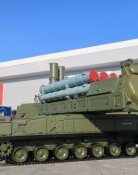Semiconductor, ``Find a Way into Non-PC Device ``
Semiconductor, ``Find a Way into Non-PC Device ``
Posted November. 07, 2001 10:55,
`Find a way into the non-PC sectors.`
The semiconductor companies are working hard to develop the D-ram for non-PC devices. It is because that the price of D-ram for PC has plummeted as the PC market became saturated.
At present, most semiconductor manufacturing companies are placing 70 percent weight on the D-ram production for PC, and 30 percent for non-PC. However, they plan to increase the D-ram production for non-PC devices up to 60 percent. The non-PC sectors have merits in little fluctuation of the consumer price and higher value added products.
Among the domestic companies, the Samsung Electronics Co. has concentrated its main capacity on the production and marketing of the network facility, and the D-ram for communication and game. The ELPIDA, a joint corporation of Japan`s Hitachi and NEC, has also staked its future in expanding the production of Rambus D-ram and DDR D-ram for workstation servers, where speed is faster than SD-ram. The Hynix semiconductor Co. is also searching for a way into the non-PC sectors, but it has undergone the difficulty due to the lack of investment funds.
It is a low voltage D-ram that has attracted most attention among the non-PC D-rams. The D-ram business circles forecast that if the third generation mobile phone service such as IMT-2000 is realized, the large-capacity memory chip over 128 M bytes will be needed.
Choi Seok-Po, a semiconductor analyst and a researcher of the Merits Securities, said that ``if the third generation mobile phone service is launched from next year, it will form a mobile phone market consuming about 0.8 billion phones until 2006. And 20 percent of the D-ram market will be occupied by the D-ram for mobile phone.``
Executive Director of Samsung Electronics Kim Il-Woong stressed that ``currently, the Samsung Electronics has applied a self-developed low voltage D-ram to the `communicator` of the Nokia, and has strengthened the marketing for a goal of 30 percent shares of next-generation mobile phone D-ram market.``
Kim Young-Joon, a senior researcher of the Kyobo Securities, underscored, ``With the popularization of the Digital TV and home networking, the D-ram will be used for various kinds of digital products. So, the semiconductor manufacturing companies should change the production lines adjusting for the increasing demand of D-ram in order to survive in the D-ram market, which has suffered from the oversupply.``
sunshade@donga.com
Headline News
- Ukraine says N. Korea’s first troops arrive in Kursk
- N. Korea begins installing barriers on Donghae Line after 'bombing show'
- K-defense operating profit expected to jump by 200% in Q3
- Seoul City launches DDP rooftop tours, celebrating 10th anniversary
- Ahn Jung-geun’s historic writings return to Korea in 15 years







